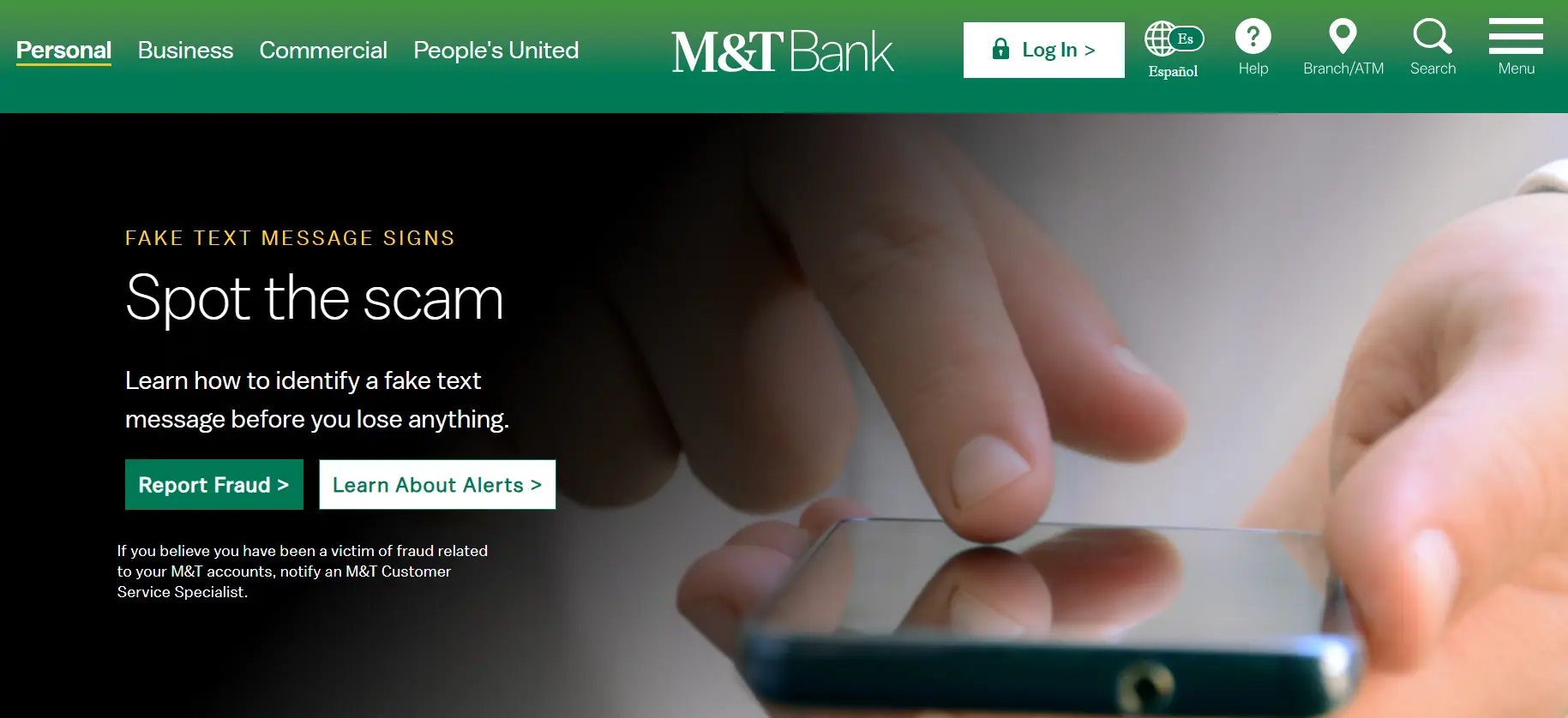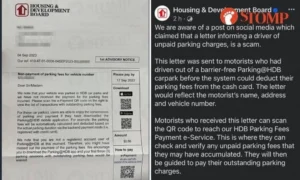Are you aware of the MTB Alerts Scam and phishing threats?
It’s crucial to protect yourself from these fraudulent activities that aim to deceive and steal your personal information.
The MTB Alert scam involves a text message claiming a declined transaction, but it’s actually a ploy to get you to click on a malicious link. This can lead to identity theft and financial loss.
To safeguard your information, be cautious of unsolicited offers and regularly monitor your accounts.
Stay informed and stay safe.
Table of Contents
What Is the MTB Alerts Scam?
You should be aware that the MTB Alerts scam is a text message scam that tricks victims into clicking a link and stealing their personal and financial information.
The common targets of this scam are individuals who use MTB Alert services or have accounts with the bank.
Once the victims click on the link, they are directed to a phishing website that appears legitimate. This website is designed to collect sensitive information such as banking credentials and personal details.
The impact of the MTB Alert scam on victims’ financial security is severe. By obtaining their personal and financial information, scammers can gain unauthorized access to their accounts, leading to financial loss and potential identity theft.
It is crucial to remain cautious and avoid clicking on suspicious links to protect yourself from falling victim to this scam and safeguard your financial freedom.
How Does the MTB Alerts Scam Works? Phishing
Stay cautious and avoid clicking on any suspicious links in the MTB Alert scam text, as it leads to a phishing website. Phishing is a common technique used by scammers to deceive and steal sensitive information.
These attackers employ deceptive tactics, often using emails, text messages, or fake websites, to trick victims into revealing personal and financial details. Once on the phishing website, scammers can steal your banking account credentials, as well as personal and financial information.
Preventing phishing attacks requires vigilance and awareness. Be skeptical of unsolicited offers or requests for personal information. It’s important to remember that scammers may exploit current events or target vulnerable individuals.
Red Flags and Warning Signs
Remaining vigilant and staying informed about potential red flags and warning signs can help you identify and avoid scams and fraudulent activities. Here are some common scams and signs of a phishing attempt to watch out for:
Unsolicited requests for personal information: Be skeptical of any emails, text messages, or phone calls asking for your sensitive data, such as passwords, Social Security numbers, or bank account details. Legitimate institutions would never ask for this information unsolicited.
Poor grammar and spelling errors: Many phishing attempts originate from non-native English speakers, so they often contain grammatical errors or spelling mistakes. This can be a red flag indicating a potential scam.
Urgency and pressure tactics: Scammers often create a sense of urgency, pressuring you to act quickly without giving you time to think or verify the legitimacy of the request. Be cautious of any communication that tries to rush you into providing personal information or making financial decisions.
Suspicious links or attachments: Phishing attempts often include links or attachments that, when clicked, can lead to malware installation or redirect you to a fraudulent website. Be cautious of any unexpected links or attachments and always verify their legitimacy before interacting with them.
By staying aware of these red flags and being cautious in your online interactions, you can protect yourself from falling victim to common scams and avoid becoming a target of phishing attempts.
Stay informed and be proactive in safeguarding your personal and financial information.
How to Protect Yourself From Scam? Tips
Be cautious and remain vigilant by familiarizing yourself with common scams and fraudulent activities. This will help you better protect your personal and financial information. Here are some common phishing techniques to watch out for:
Spoofed websites: Scammers create fake websites that mimic legitimate ones. Their goal is to trick you into entering your login credentials or personal information.
Phishing emails: Be wary of emails that ask you to verify your account or provide sensitive information. Always check the email address and look for grammatical errors or suspicious attachments.
Smishing: Scammers send text messages pretending to be from a legitimate organization. They often ask you to click on a link or provide personal details.
Vishing: Scammers call you and pretend to be from a trusted institution. Their aim is to coax you into revealing sensitive information.
If you fall victim to a scam, take these steps:
Report the incident to your local authorities and to the relevant financial institution or organization.
Change your passwords and monitor your accounts for any suspicious activity.
Consider placing a fraud alert or credit freeze on your credit reports.
Educate yourself about scams and stay updated on the latest techniques to avoid falling victim again.
Conclusion
Take the necessary precautions and stay informed about the tactics used by scammers to safeguard your personal and financial information. Falling for the MTB Alert scam can have serious consequences.
By clicking on the link in the scam text, you expose yourself to the risk of phishing. This can lead to the theft of your banking account credentials and other sensitive information. It’s crucial to report scams like this and spread awareness to protect yourself and others.
Scammers use deceptive tactics to trick and defraud individuals, targeting vulnerable individuals or exploiting current events. Remember to be cautious and skeptical of unsolicited offers or requests for personal information.
Frequently Asked Questions
How Can Scammers Use the MTB Alert Scam to Steal Personal and Financial Information?
Scammers use the MTB Alert scam to trick and scare you into clicking a link. This link leads to a phishing website that steals your banking and personal info, resulting in financial and emotional consequences. Prevent this by safeguarding your personal information.
What Are Some Red Flags and Warning Signs to Look Out for in the MTB Alert Scam?
Look out for red flags like unsolicited texts, claims of declined transactions, and requests to click on links in the MTB Alert scam. Stay safe by being cautious, skeptical, and protecting your personal information.
What Are Some Tips to Protect Oneself From Falling Victim to the MTB Alert Scam?
To protect yourself from the MTB Alert scam, be aware of common phishing techniques. Implement online security measures like strong passwords, two-factor authentication, and cautious clicking. Stay vigilant and skeptical of unsolicited requests for personal information.
Are There Any Legal or Financial Consequences for Victims of the MTB Alert Scam?
There may be legal consequences for victims of the MTB Alert scam, such as identity theft and financial loss. However, it is unlikely that victims will receive financial compensation for their losses. Stay vigilant to protect yourself.
Can Monitoring Financial Accounts Alone Prevent Identity Theft Caused by the MTB Alert Scam?
Monitoring financial accounts alone cannot prevent identity theft caused by the MTB Alert scam. It is important to take additional measures such as protecting personal information, being cautious of unsolicited offers, and regularly monitoring credit reports to prevent identity theft.
Also Read
Mint Velvet Outlet Scam or Legit?: Mintoutletuk.com Reviews
Sorella Lash Serum Reviews: Is It Worth Trying?
Unl Refund Department Scam Explained – Call From 8553371911?
Also Read
Highland Armory Paypal Scam Explained: Don’t Be Fooled!
Is Ocroxbit Com Legit or a Scam? Unmasking the Dark Side!
Is Amazon Vine Legit or a Scam? Amazon Vine Reviews!
Also Read
Is ShopPremiumOutlets.com Legit? Unveiling Reviews!
Reviewlify Scam – Ipad Pro Scam Text Reviewlify.com Exposed!
Is Stacees Legit or a Scam? Unveil the Secrets
Also Read
Maui Divers Jewelry Reviews – Explore the Captivating World!
Diversedif.com Reviews: Is Diversedif.com Legit or Scam?
Is Nenatex Scam or Legit? – Nenatex.Com Crypto Review
Also Read


















































